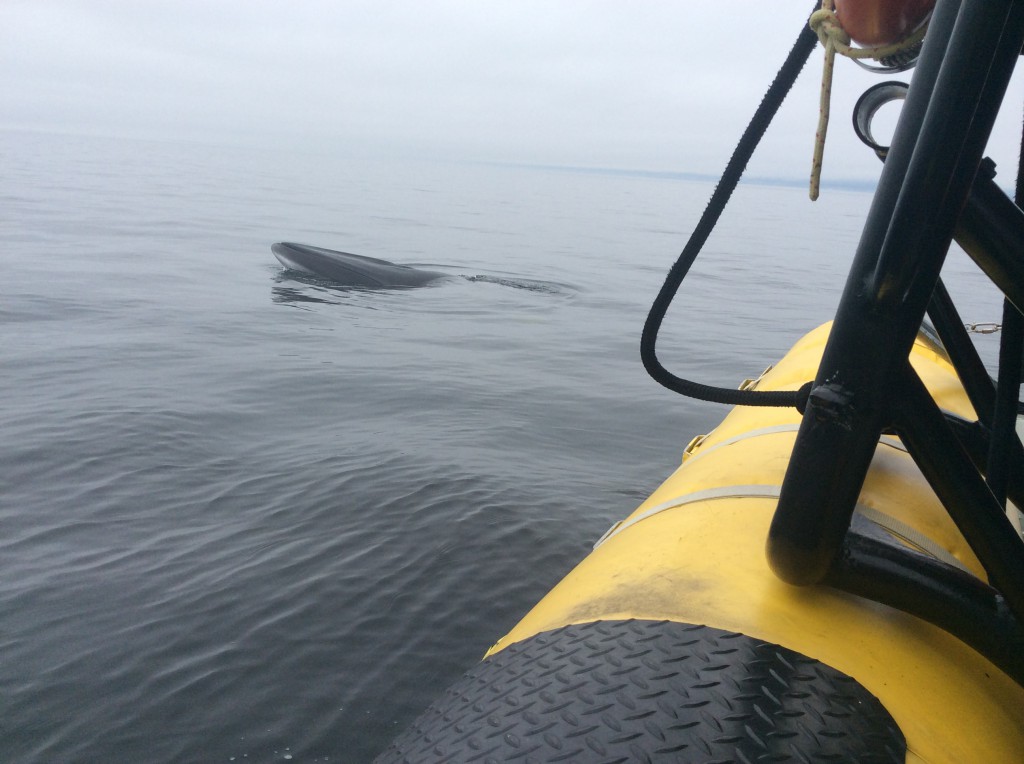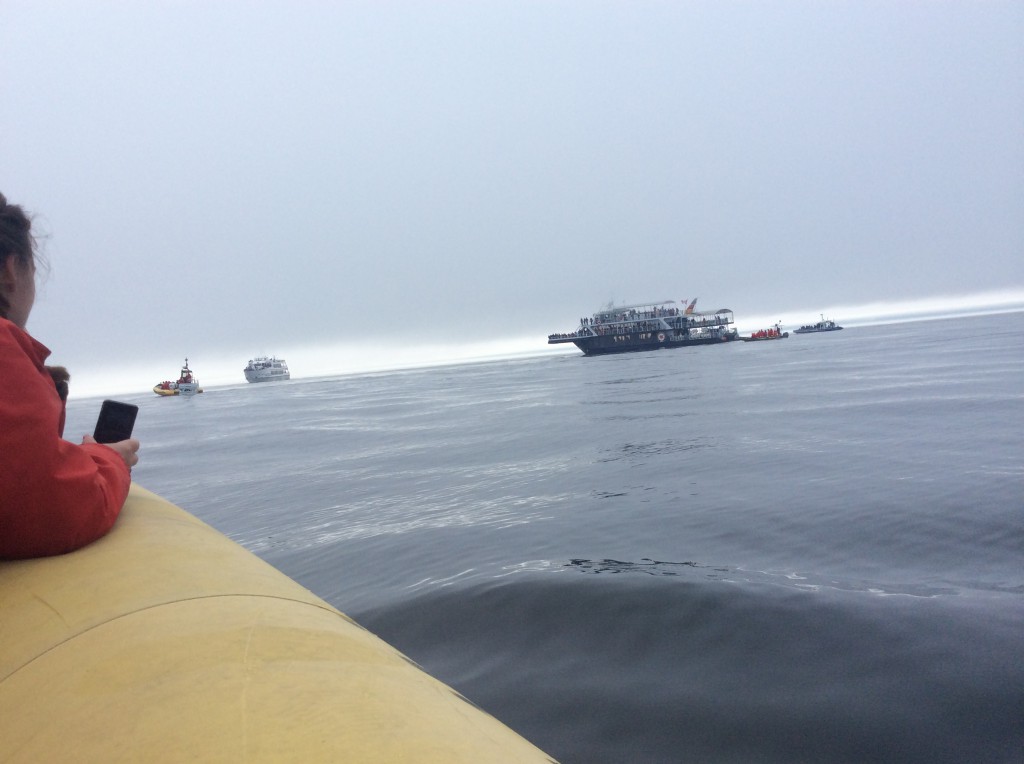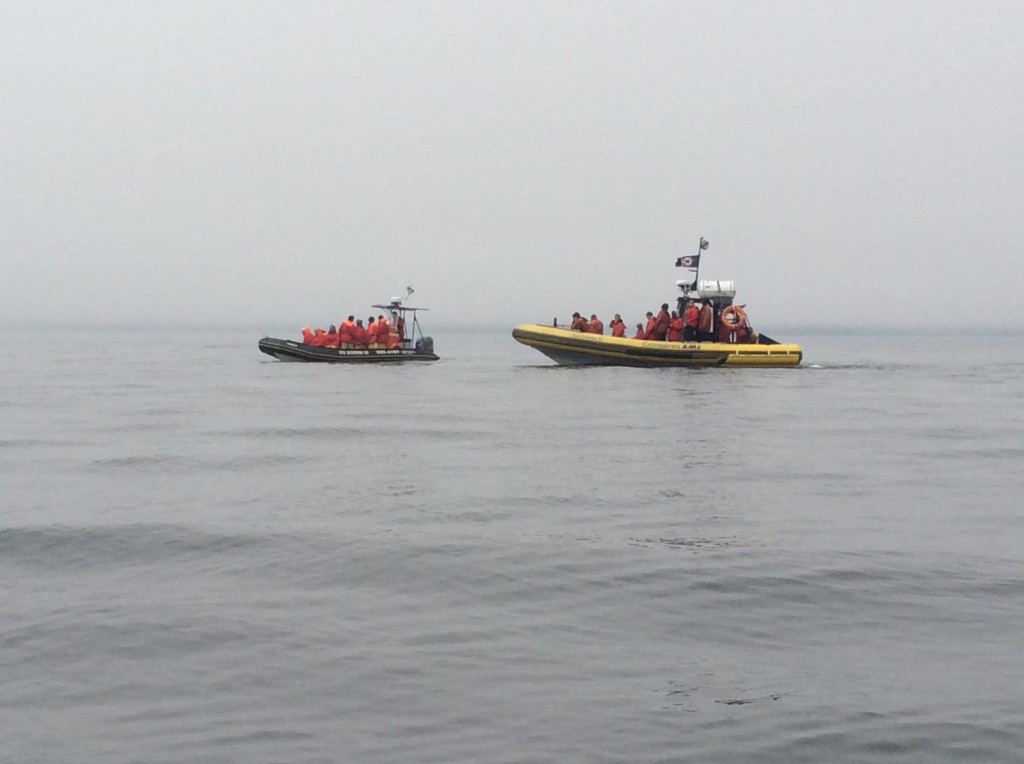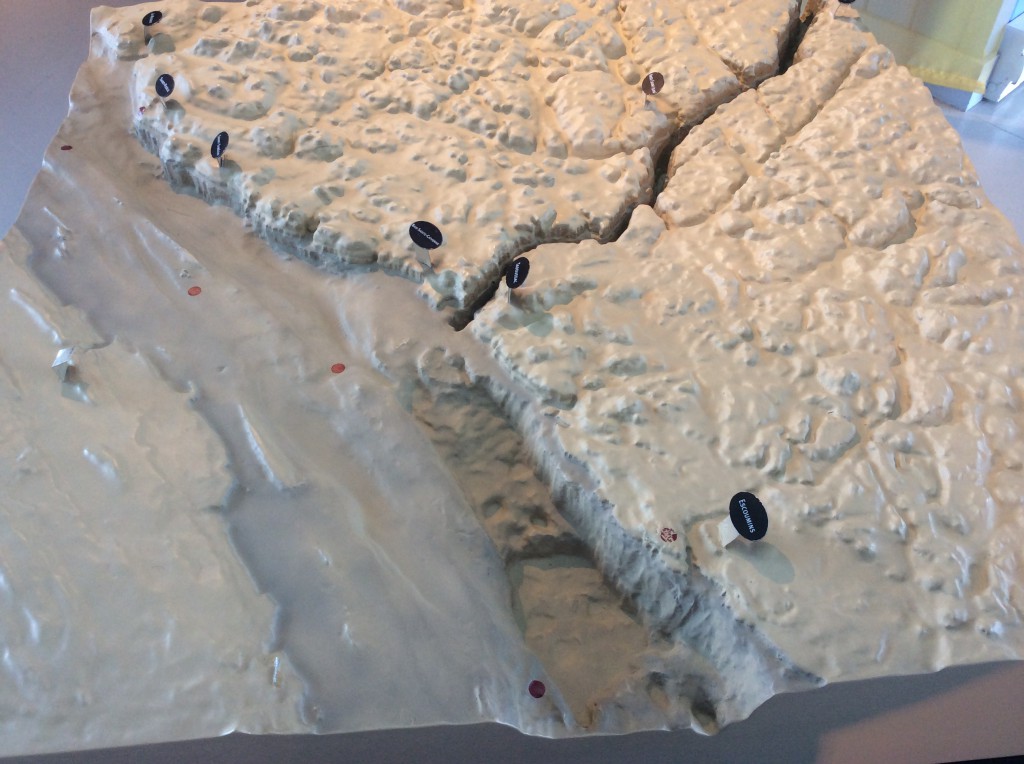Being in Quebec (Canada) on the occasion of IGARSS meeting, we were to watching WHALES in the natural observatory of the St. Lawrence river, near Tadoussac. We went on Wednesday 16 all day: 3 hours one way by bus, 3 hours by zodiac (there is another option by boat) and 3 hours back by bus.
There are 13 species of whales in the St. Lawrence, including friendly belugas and blue whales, the largest animals to have ever lived on earth.
Our zodiac:
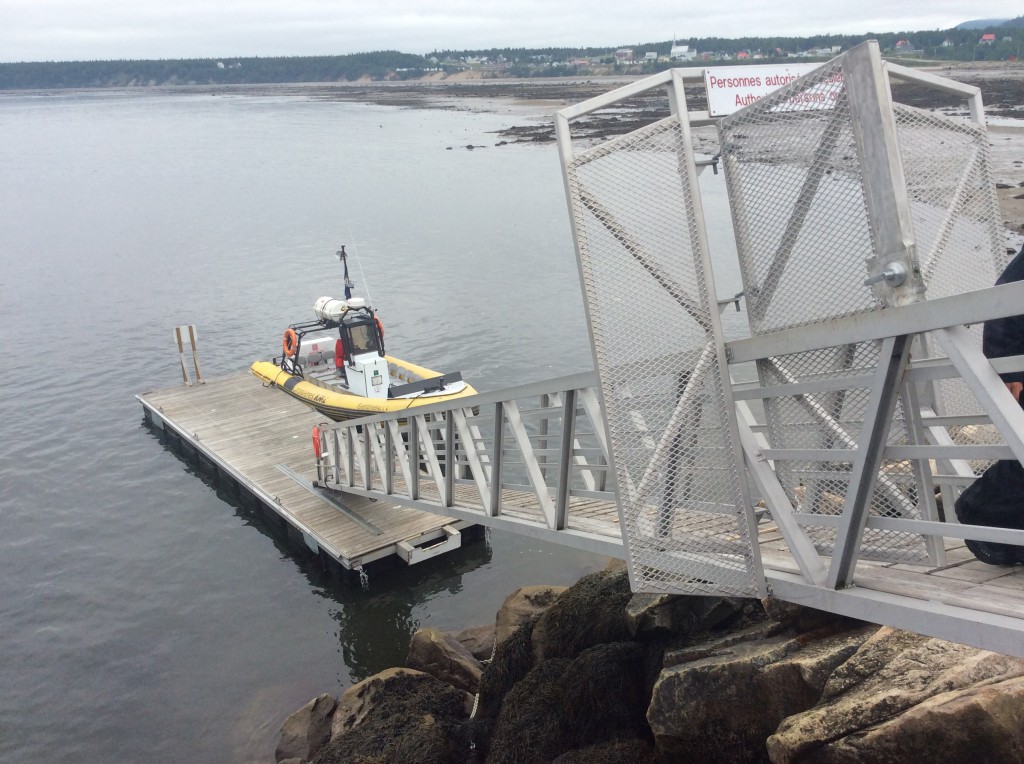
The first whale we watched was from far away, like most cases (for example we watched large groups of belugas -small white whales- moving on the river):
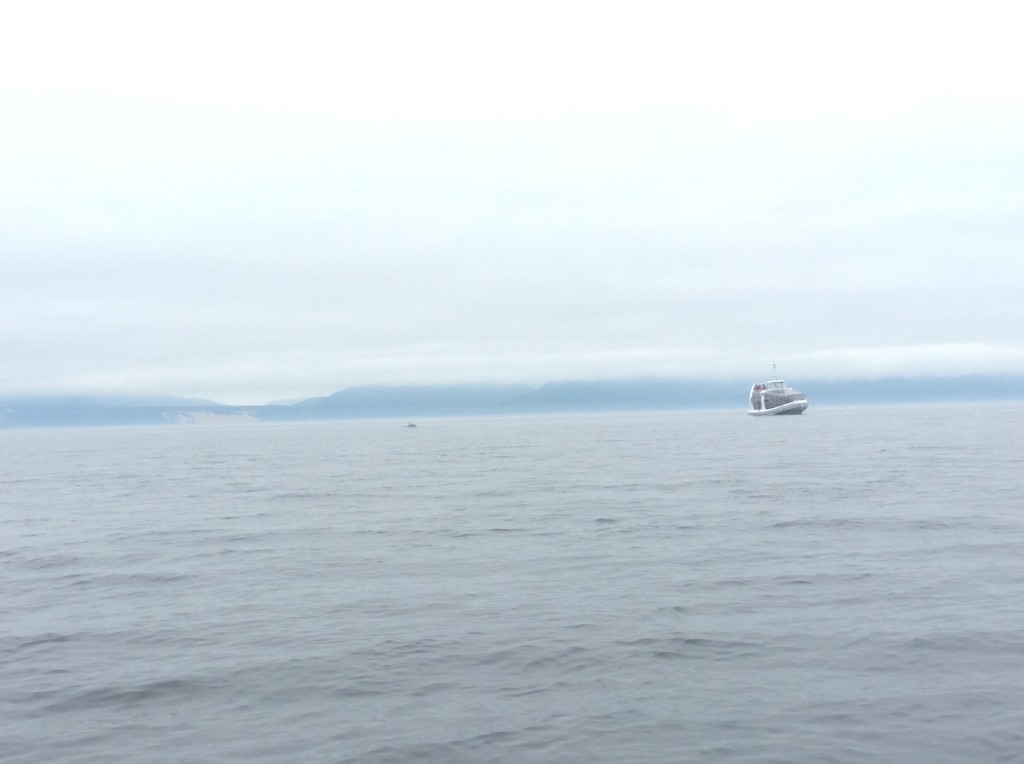
But we were less than an hour in water and a Minke Whale was very very near to us:
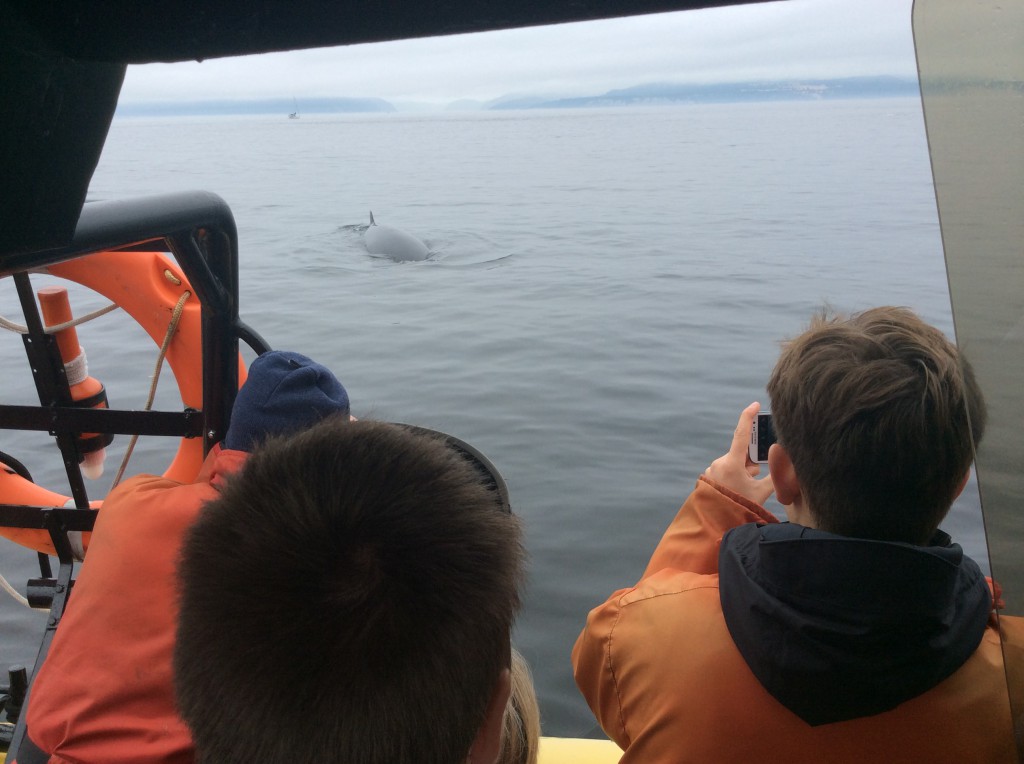
We watched the whale’s mouth several times very close to us:
A blue whale came to breathe but was asleep and only watched once, especially the tail sinking in the water. All boats were holding their breath to watch behind.
Each zodiac carries about 25 people:
Now we can observe in the picture a model of the St. Lawrence River since whales like to be here. Mostly it’s for two reasons, the first is that there is a very deep grave in the river in this area. And the second, water temperature remains constant and very cold about 4ºC.
Different types of whales that inhabit these waters:
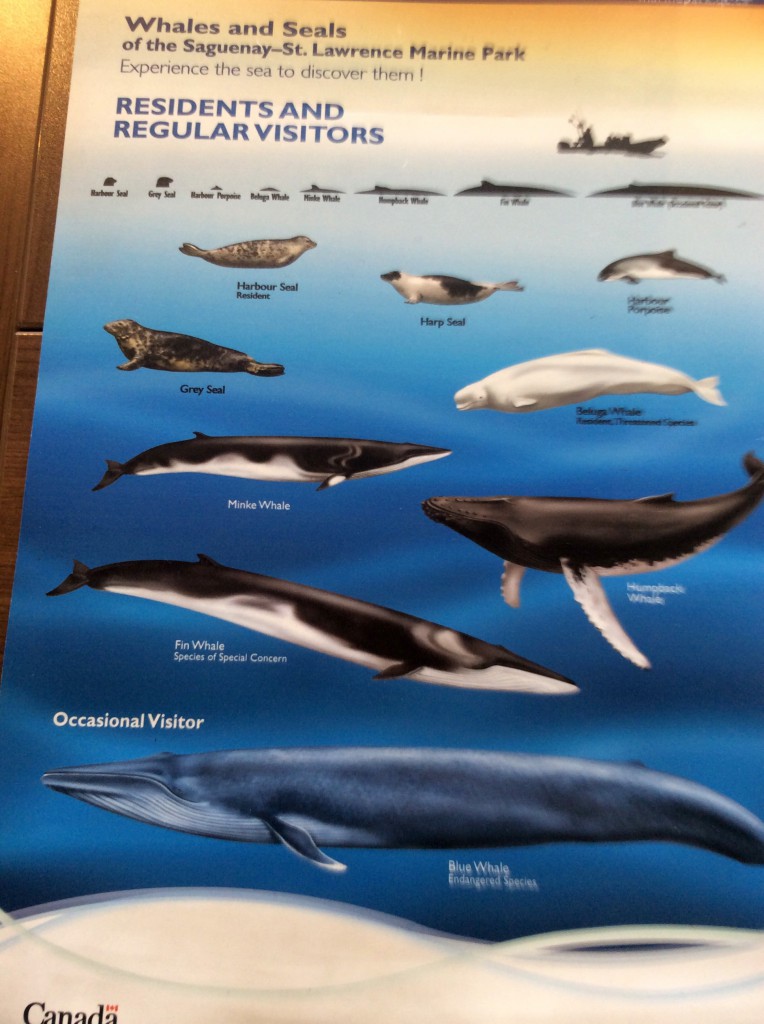
Another link in this blog related to this post:
http://gim.unex.es/blogs/pablogr/2014/08/06/the-best-scientific-paper-in-2013-of-the-journal-ieee-jstars-in-the-awards-banquet-from-igarss2014/



